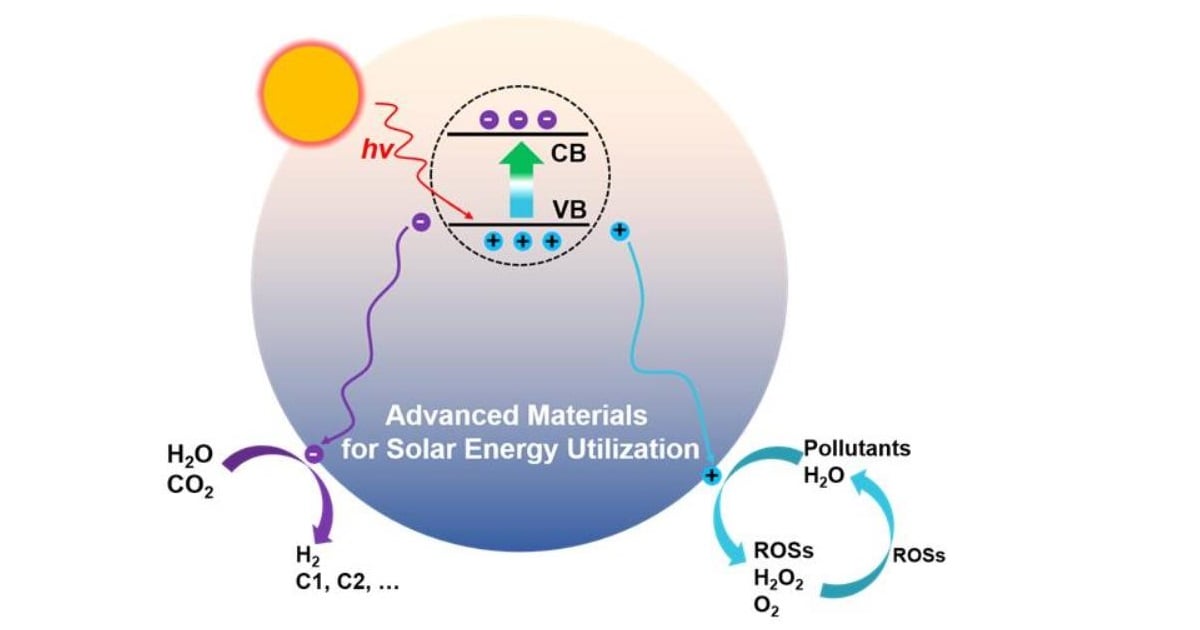Advanced Materials for Solar Energy Utilization
A special issue of Materials (ISSN 1996-1944). This special issue belongs to the section "Energy Materials".
Deadline for manuscript submissions: 20 July 2025 | Viewed by 17497

Special Issue Editors
Interests: photocatalysis; CO2 conversion; hydrogen; electrocatalyst
Special Issues, Collections and Topics in MDPI journals
Interests: heterogeneous catalysis; photocatalytic water splitting; photocatalytic CO2 reduction
Special Issues, Collections and Topics in MDPI journals
Special Issue Information
Dear Colleagues,
It is our pleasure to welcome you to this new, ambitious, and inspiring interdisciplinary Topic entitled “Advanced Materials for Solar Energy Utilization”. Photochemical technology can directly convert solar energy into electricity and chemicals, and it can degrade a wide range of organic pollutants into easily degradable intermediates or less toxic small molecular substances. It is regarded as one of the most important ways to solve the global energy shortage and environmental pollution problem. In addition, photochemistry may play a key role in fields such as green chemistry, energy production, or nanomedicine.
Therefore, our aim in this Special Issue focuses on advanced solar-energy-utilization materials, including but not limited to photochemical materials for water splitting, CO2 reduction, ammonia synthesis, photovoltaic, H2O2 synthesis, pollutant degradation, organic synthesis, etc. We look forward to receiving your contributions (both original research papers and reviews) soon, so we can present your excellent findings to a broad audience via open access publication and provide the research community with new perspectives on advanced photochemical materials and their solar energy utilization.
Dr. Xingwang Zhu
Dr. Tongming Su
Guest Editors
Manuscript Submission Information
Manuscripts should be submitted online at www.mdpi.com by registering and logging in to this website. Once you are registered, click here to go to the submission form. Manuscripts can be submitted until the deadline. All submissions that pass pre-check are peer-reviewed. Accepted papers will be published continuously in the journal (as soon as accepted) and will be listed together on the special issue website. Research articles, review articles as well as short communications are invited. For planned papers, a title and short abstract (about 100 words) can be sent to the Editorial Office for announcement on this website.
Submitted manuscripts should not have been published previously, nor be under consideration for publication elsewhere (except conference proceedings papers). All manuscripts are thoroughly refereed through a single-blind peer-review process. A guide for authors and other relevant information for submission of manuscripts is available on the Instructions for Authors page. Materials is an international peer-reviewed open access semimonthly journal published by MDPI.
Please visit the Instructions for Authors page before submitting a manuscript. The Article Processing Charge (APC) for publication in this open access journal is 2600 CHF (Swiss Francs). Submitted papers should be well formatted and use good English. Authors may use MDPI's English editing service prior to publication or during author revisions.
Keywords
- photocatalysis
- photocatalyst
- water splitting
- CO2 reduction
- ammonia synthesis
- H2O2 synthesis
- photochemistry
- pollutant degradation
- organic synthesis
- photovoltaic
- new energy technology
Benefits of Publishing in a Special Issue
- Ease of navigation: Grouping papers by topic helps scholars navigate broad scope journals more efficiently.
- Greater discoverability: Special Issues support the reach and impact of scientific research. Articles in Special Issues are more discoverable and cited more frequently.
- Expansion of research network: Special Issues facilitate connections among authors, fostering scientific collaborations.
- External promotion: Articles in Special Issues are often promoted through the journal's social media, increasing their visibility.
- e-Book format: Special Issues with more than 10 articles can be published as dedicated e-books, ensuring wide and rapid dissemination.
Further information on MDPI's Special Issue policies can be found here.







